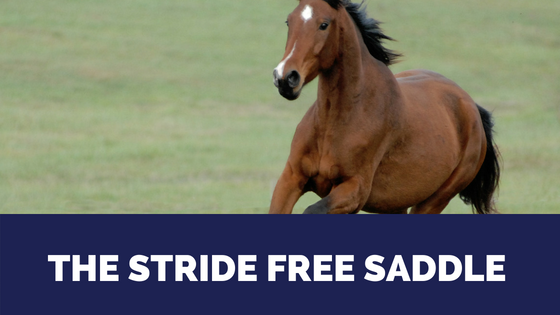
The Stride Free Saddle Concept: I’m A Fan!
I had heard of Peter Horobin for many years before having the pleasure of meeting him.
Until that time he was like Yoda the character from Star Wars, a legend, however, I had never seen him!! I was introduced to him by a colleague and good friend Peter Muscatt, a previous assistant trainer to Chris Waller.
After having worked extremely closely with Peter Muscatt for a number of years it was obvious that he and I shared the same views and passion regarding equine back care.
Enter Peter Horobin.
After our initial meeting it was clear that we would work very closely together in educating not only the general public, however, each other on a daily basis and that we both shared the same passion; to improve the overall standard of back care and therefore positively influence equine welfare and performance.
The Stride Free Saddle
When I first saw the stride free saddle concept I thought – it just makes sense!!
I encourage everyone to watch this video where it is described in detail why the stride free works so well in relation to the position and shape of the tree.
Witnessing Peter, Rhys and Marlee the factory is a sight to behold and it is little wonder that as a family unit they continue to achieve such high standards and set the benchmark in saddle making.
The Influence of Tack On Equine Back Pain
In any equine discipline, the horse needs stride length and elevation. From galloping to extended trot to jumping to barrel racing etc. Any compromise in this area may negatively impact on performance and in addition cause pain and injury.
The influence of tack and back pain is still an extremely underrated cause yet such an obvious one. As an Equine Physio, I witness on a daily basis soft tissue soreness and gross restrictions in range of motion through the shoulder and wither region as a consequence of inappropriate tack.
Any horse that presents with back pain in the appropriate area I will always refer for a saddle fit. The thing I love about stride free is that it allows for movement! The position of the tree allows for the scapula to elevate and retract when the shoulder moves forward, ie extends.
Common presentations that I witness from an ill-fitting saddle or even just a poorly designed saddle is;
- acute muscle spasm over the large muscles adjacent to the wither, pain over the spine, reduced range of motion of the thoracic spine,
- reduced protraction of the forelimb and thoracic spine muscle spasm.
I have been very impressed with the positive impact that stride free has had on the types of presentations. There is no doubt that the design of the tree of stride free allows for dynamic shoulder movement and as a result conforms to the scapula and wither region exceptionally well.
This creates an even pressure and as a result, minimises the potential for the soreness described above.
Prevention is better than cure however and just like I advise people from a physiotherapy perspective I would not wait until you have a problem, I would encourage you to try one of these saddles and see if you like it.
